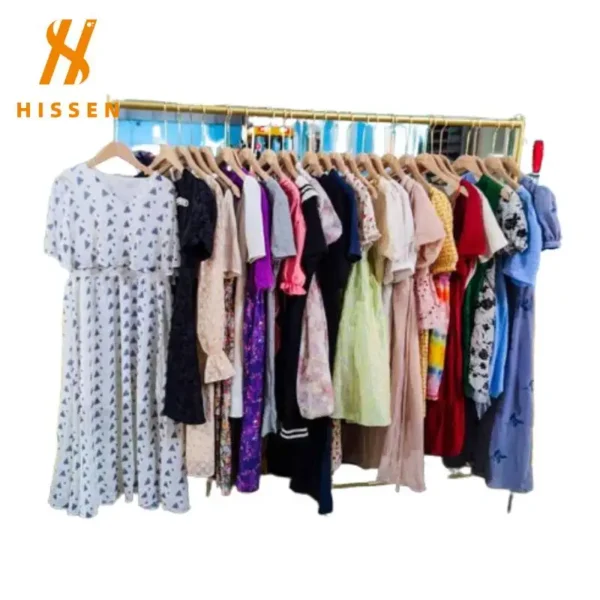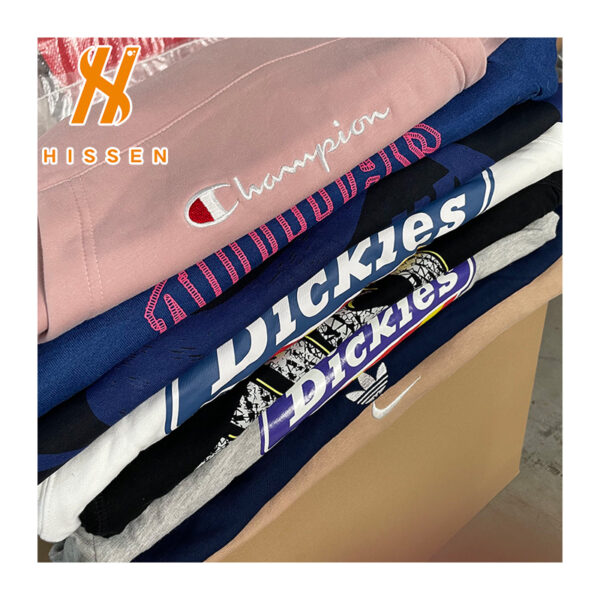In today’s fashion world, second-hand clothes aren’t just donations anymore. They have turned into valuable items sold in bulk globally. If you import in Africa, resell in Southeast Asia, or start in second-hand clothes wholesale, knowing where to buy used clothes in bulk is key to your success.
This guide is for business owners, entrepreneurs, and wholesalers aiming to buy cheap used clothes in bulk. You’ll learn where to buy used clothes in bulk, how to identify trustworthy suppliers, and how to optimize your procurement process for long-term success. From online directories to niche offline markets, this resource will help you unlock real opportunities in the global used clothing trade.
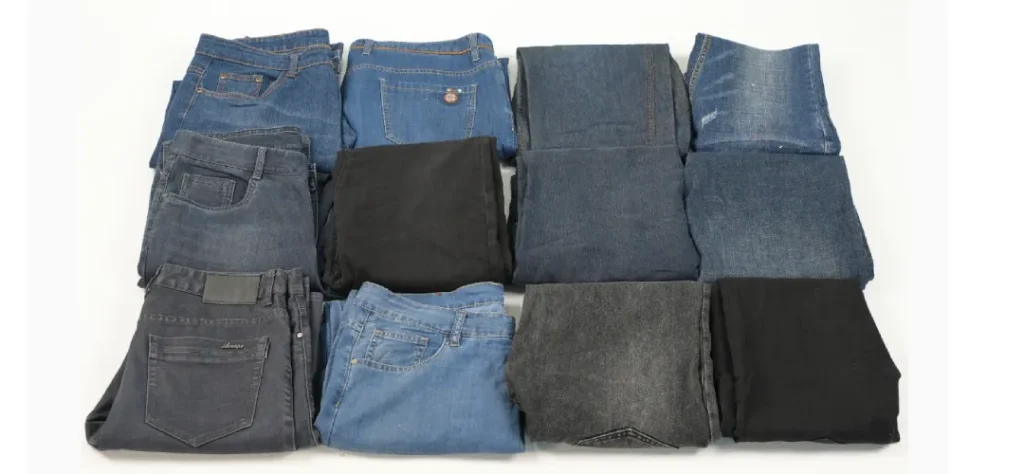
Factory Websites to Buy Used Clothes in Bulk
The internet has made it easier than ever to connect with global suppliers of used clothes. For bulk buyers, online platforms are often the first step—offering convenience, access to a wide range of sellers, and detailed catalogs.
On factory websites, you can not only build long-term relationship with direct suppliers and save money by skipping middlemen, but also enjoy advantages below:
- Browse product categories tailored for different markets
- Inspect real photos of sorting and packing facilities
- Request factory-direct quotes—often cheaper than platforms like Alibaba or local resellers
- Talk to sales reps via WhatsApp for quick pricing updates
- Negotiate custom bale mixes to avoid paying for unwanted items
Some factories even offer live video inspections, helping you confirm quality before paying. If you’re looking to buy used clothes in bulk cheap, factory websites are where the real deals start.
Recommended Factory Websites
- Bank & Vogue: A North American leader in second-hand clothing logistics and resale partnerships.
- JMP Used Clothing: One of the largest textile reclaimers and processors in the UK.
- Green Team: A major U.S. exporter offering factory-inspected clothing bales and warehouse pickup for overseas clients.
- Hissen Global: One of the largest second-hand clothing factories in China, serving African and Southeast Asian markets with direct sorting and shipping services.
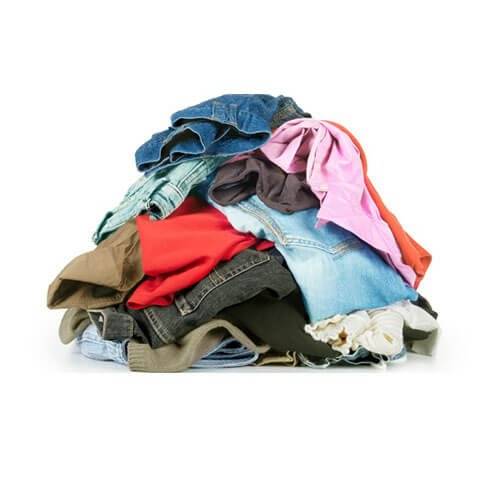
Platforms for Buying Used Clothes in Bulk
B2B Platforms
Sites like Alibaba, Made-in-China, and Global Sources list thousands of wholesale used clothing suppliers. These platforms are ideal for comparing offers, reading buyer reviews, and verifying certifications. However, it’s crucial to vet each seller carefully: always check for gold supplier status, business licenses, and recent customer feedback. Use trade assurance features whenever possible.
Social Platforms
WhatsApp, Telegram, and Facebook groups are becoming popular peer-to-peer spaces where international buyers—especially from Africa—share real-time supplier recommendations, reviews, and deal alerts. Many verified Chinese and Pakistani factories operate exclusive WhatsApp groups for B2B clients. You can join to access daily bale offers, seasonal discounts, and even spot videos of available stock.
No matter which platform you use, always request the supplier’s business license, export experience references, and videos of their sorting and packing lines. Verifying credibility upfront saves you from low-grade goods and hidden costs.
If you’re just starting out or want to test specific categories like vintage jeans or branded women’s wear, consumer-facing platforms like eBay, Shopee, or Mercari offer curated lots in small batches (5–20 kg). These platforms are ideal for sample sourcing, not bulk container shipments.
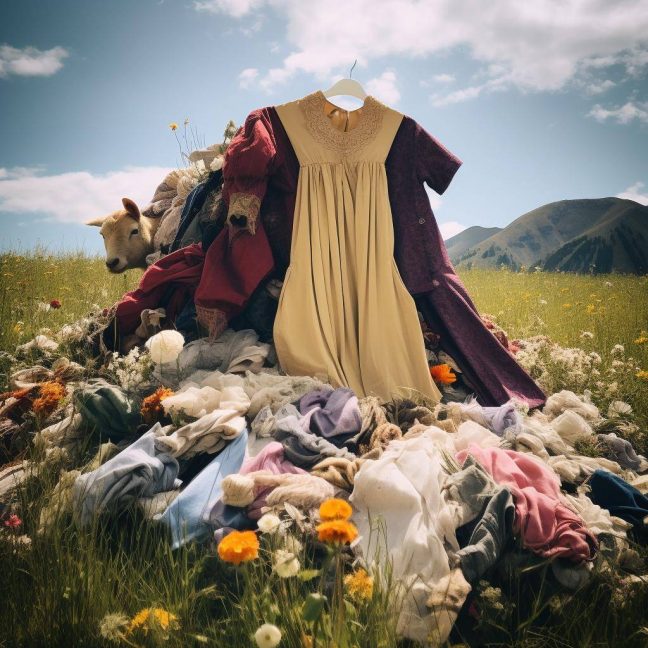
Offline channels to find used clothes in bulk
While online platforms are convenient, offline channels give buyers the chance to physically inspect the goods before purchase—especially important for quality-sensitive markets. These sources are ideal for those who want to build strong supplier relationships and get better pricing through face-to-face negotiation.
Thrift Store Bulk Programs
Large chains like Goodwill, The Salvation Army, and Value Village offer special wholesale programs for businesses. Registered resellers can purchase mixed bales by weight—often starting from 50 to 100 lbs. These bales are usually sold at a discounted rate based on weight and season. Don’t overlook smaller regional thrift stores, which may quietly offer clearance lots or seasonal surpluses for bulk buyers.
Warehouse & Liquidation Sales
Bulk auction platforms such as B-Stock, Liquidation.com, and Via Trading list used clothing, customer returns, and unsold inventory. These lots can be shipped to your location or picked up from local warehouses. Community events, like church or school rummage sales, may also clear unsold donations in bulk at steep discounts—especially on closing days.
Flea Markets & Wholesale Districts
In-person markets remain essential sourcing hubs. Top spots include:
- Los Angeles Fashion District (USA)
- Tanjong Pagar (Singapore)
- Kandahar Market (India)
These markets sell by weight or bundle and often cater to both local resellers and overseas exporters. You can negotiate directly with vendors and inspect the clothing before purchase.
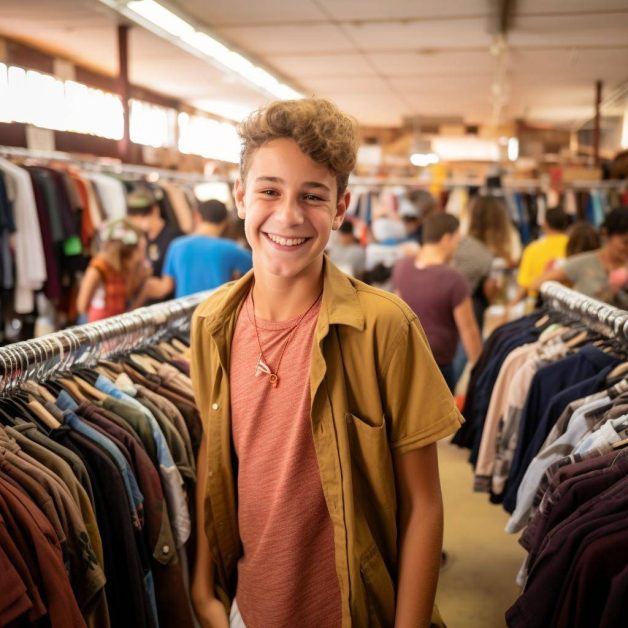
Niche Sources: Where to Find Specialized or Branded Used Clothes
Beyond general suppliers, niche sources offer more targeted inventory—ideal for resellers with specific market demands.
Charity Organizations
Groups like Oxfam, Red Cross, and Savers often resell surplus stock in bulk. These items are typically sorted by category and season, and pricing tends to be lower—making them a strong option for budget-conscious resellers or community programs.
Corporate Partnerships
Fast fashion brands like H&M have launched resale or recycling programs. Some of their gently worn items are funneled to partner resellers. Check official sustainability programs or contact their resale platforms to explore potential sourcing collaborations.
Garage Sale Aggregators
Platforms like Garage Sale Finder, or Facebook Marketplace allow you to buy in bulk from multiple local sellers. While items may be mixed in quality, it’s a good low-risk way to build a varied inventory when starting out. Apps like Garage Sale Finder help negotiate bulk buys from multiple local sellers, combining items for diverse, low-cost lots.
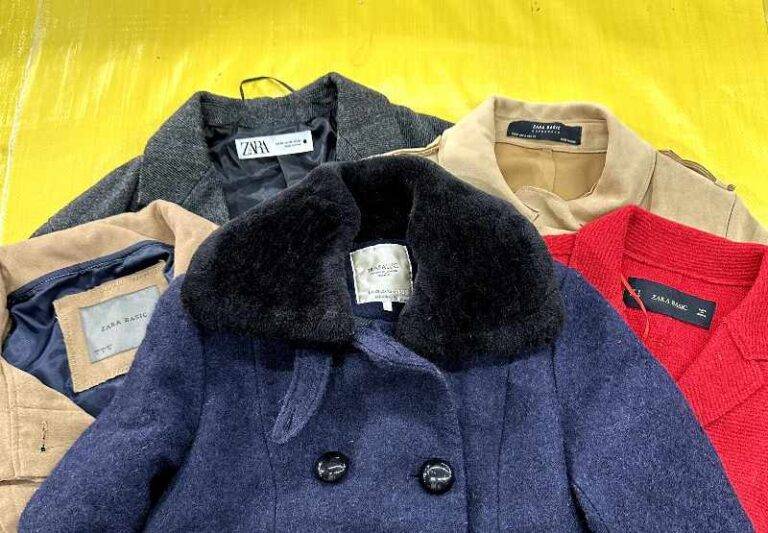
Choosing the Right Supplier: Key Factors to Evaluate
When sourcing used clothes in bulk, not all suppliers are created equal. For the Philippines, you can see our list of the top ukay-ukay suppliers in the Philippines. For the wider region or more detailed consideration, here are the key criteria to help you identify trustworthy partners:
Factory Capacity & Certifications
Top-tier suppliers typically operate multiple warehouses and maintain industry certifications. Look for:
- At least 3 sorting factories
- ISO9001 certification
- Video footage of sorting, packing, and disinfection lines
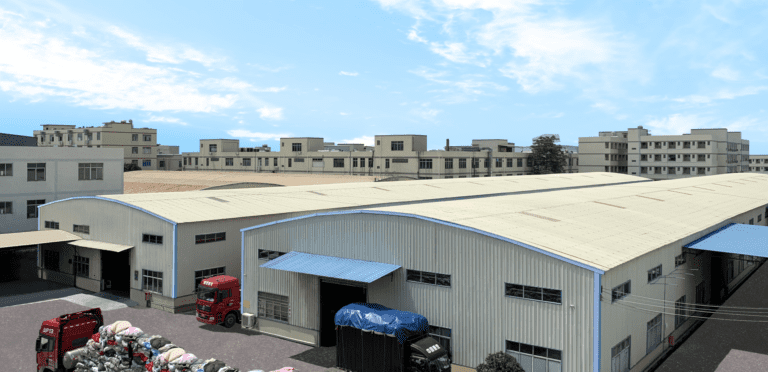
Sorting Quality: A-Grade Clothing
A reliable supplier should clearly define their sorting standards. A-grade bales should include:
- No stains or holes
- No visible wear or pilling
- Accurate labeling of categories (e.g., Used Women’s Summer Tops)
Customization for Target Markets
Different African and Southeast Asian countries have different needs. Summer clothing is preferred in Nigeria, Ghana, and Cambodia, while some regions require warmer clothes. Size, style, and brand awareness also vary by region. A good supplier will let you customize by:
- Category (Used Women’s Clothes Wholesale, Used Men’s Clothes Wholesale, Used Children’s Clothes Wholesale)
- Season(Used Summer Clothes and Used Winter Clothes)
- Brand
- Size distribution
Logistics & Packaging
Packing standards vary between suppliers. Choose one that:
- Offers 45–100 kg bale options
- Uses skilled labor for compact, uniform packing
- Can organize either FCL (Full Container Load) or LCL (Less-than-Container Load)

End-to-End Support
A strong supplier doesn’t just ship your order—they offer end-to-end service. You will be supported in:
- Market research guidance
- Bale labeling and sorting
- Branded packaging
- Documentation and customs clearance
But a great supplier should also meet the additional requirements:
Deep Understanding of TargetMarkets
Top suppliers typically build region-specific expertise through long-term market engagement. For example, some suppliers have over 10 years of export experience to 60+ countries, with insights into African and Southeast Asian preferences.

How to Order: Step-by-Step
Buying in bulk can feel overwhelming. Here’s a clear step-by-step guide to help you order your first shipment of second-hand clothes with confidence:
- Assess Your Market Needs: Know your target country’s clothing preferences.What are the climate, fashion preferences, and top-selling categories in the destination country?
- Request a Catalog or Price List: Contact supplierto get updated rates for various grades, weights, and categories.
- Place a Sample Order: Before making a large investment, test quality by ordering a 45–100 kg sample of your top-selling category.
- Choose Packaging: Select bale sizes (45 kg, 80 kg, 100 kg, etc.) and sorting instructions.
- Confirm Shipping Plan: Decide between FCL or LCL based on volume. Confirm if the supplier arranges freight forwarding or if you must handle it.
- Arrange Inspection: Ask for live video inspection or hire a third-party inspector.
- Make Payment & Finalize Contract: Use secure payment terms, ideally via platform escrow or TT after inspection.
- Track & Receive Goods: Get customs documents in advance and confirm import duties in your country.
Want to give a try to order used clothes wholesale? You can enquiry the supplier.
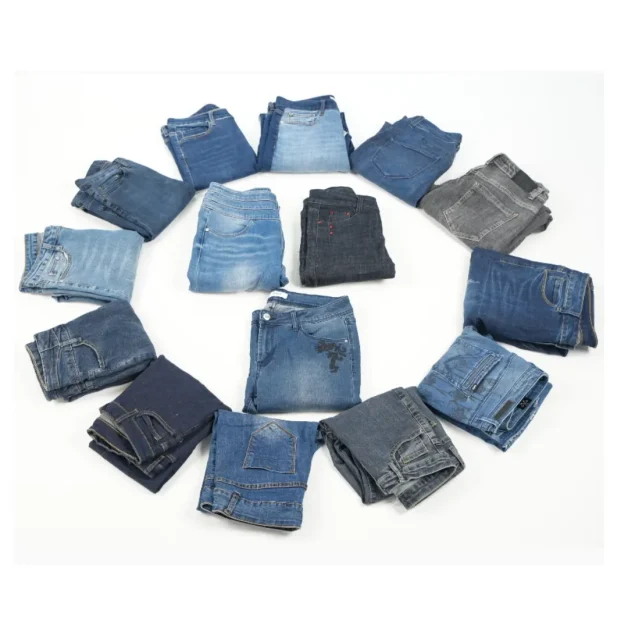
Conclusion
The global second-hand clothing market offers strong business potential, especially for B2B buys knowing where—and how—to buy in bulk. Whether you’re sourcing used clothes by bale for resale in Africa, Southeast Asia, or Latin America, your success depends on making smart sourcing decisions.
Here’s how to stay ahead:
Choose the Right Supplier
Partner only with bulk used clothing suppliers that offer transparency, consistent sorting quality, and customization for your market.
Focus on Market Fit
Select stock based on local climate, customer preferences, and pricing expectations. Use supplier insights to fine-tune bale content by season, size, and brand.
Build for the Long Term
Don’t chase the cheapest bales. Instead, build relationships with trustworthy second-hand clothes exporters who can offer stable supply, clear documentation, and after-sales support.
FAQ
Where can I buy cheap used clothes in bulk?
For budget buyers, consider sourcing from:
- Chinese suppliers on Alibaba or Made-in-China
- Pakistan and India-based factories offering low-cost summer bales
- US thrift store programs like Goodwill Outlet or Salvation Army
You can also monitor liquidation auctions or join WhatsApp seller groups to get flash deals and factory overruns.
What's the best country to import used clothes in bulk from?
That depends on your location and budget. Generally:
- China: Good balance of quality and price, large volume capacity
- Pakistan and India: Cheapest prices, best for tropical clothing
- South Korea and Japan: Stylish stock, popular in Southeast Asia
- USA and Europe: High-grade, branded goods but at higher cost
Choose based on shipping cost, target customer, and local customs regulations.
Where to buy wholesale used clothing in the USA?
In the U.S., top wholesale sources include:
- Miami: Check local distributors near the Port of Miami that handle bulk secondhand or surplus clothing
- Los Angeles Fashion District for West Coast buyers
- New Jersey and Georgia have import warehouses specializing in baled second-hand clothing
- B-Stock and Via Trading for returned, overstock, or used garments
- Goodwill Commercial Services for direct business-to-business sales
Where can I find reliable used clothing suppliers for bulk buying?
The most popular sourcing regions are China (Guangzhou, Shenzhen), Pakistan (Karachi), South Korea, and Europe (Germany, Netherlands). Start with factory websites or B2B platforms like Alibaba, Global Sources, or Made-in-China, then verify suppliers through video inspections and trade references.
Are there female-focused suppliers of second-hand clothes in bulk?
Yes, some suppliers specifically cater to boutiques or female-led businesses. They often offer:
- Curated bales of trendy women’s fashion
- Packaging designed for boutique resal
- One-on-one customer service via WeChat or WhatsApp
- Suppliers that allow category-specific sorting (e.g., “Women’s Skirts Only”) and offer sample orders before full purchase

